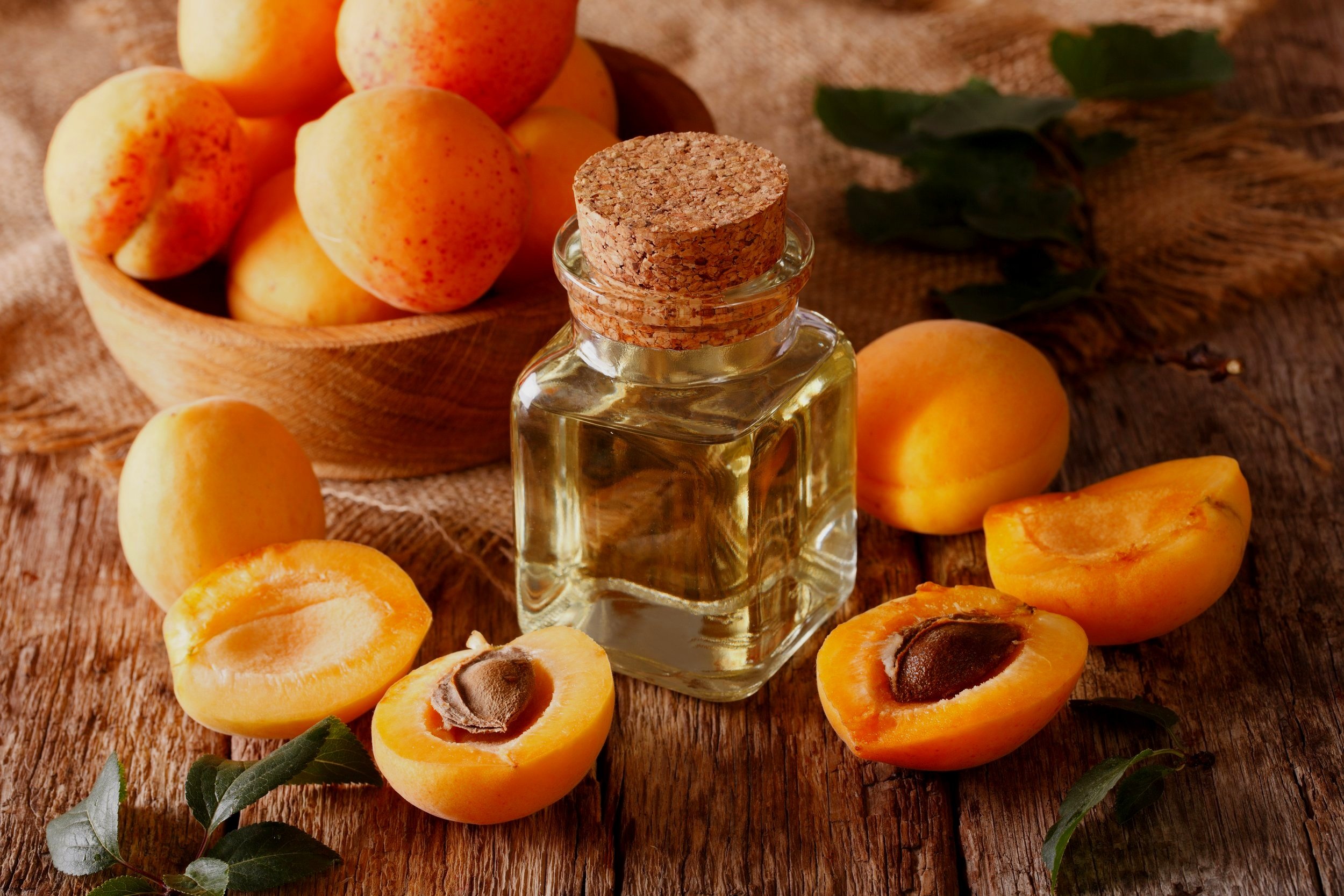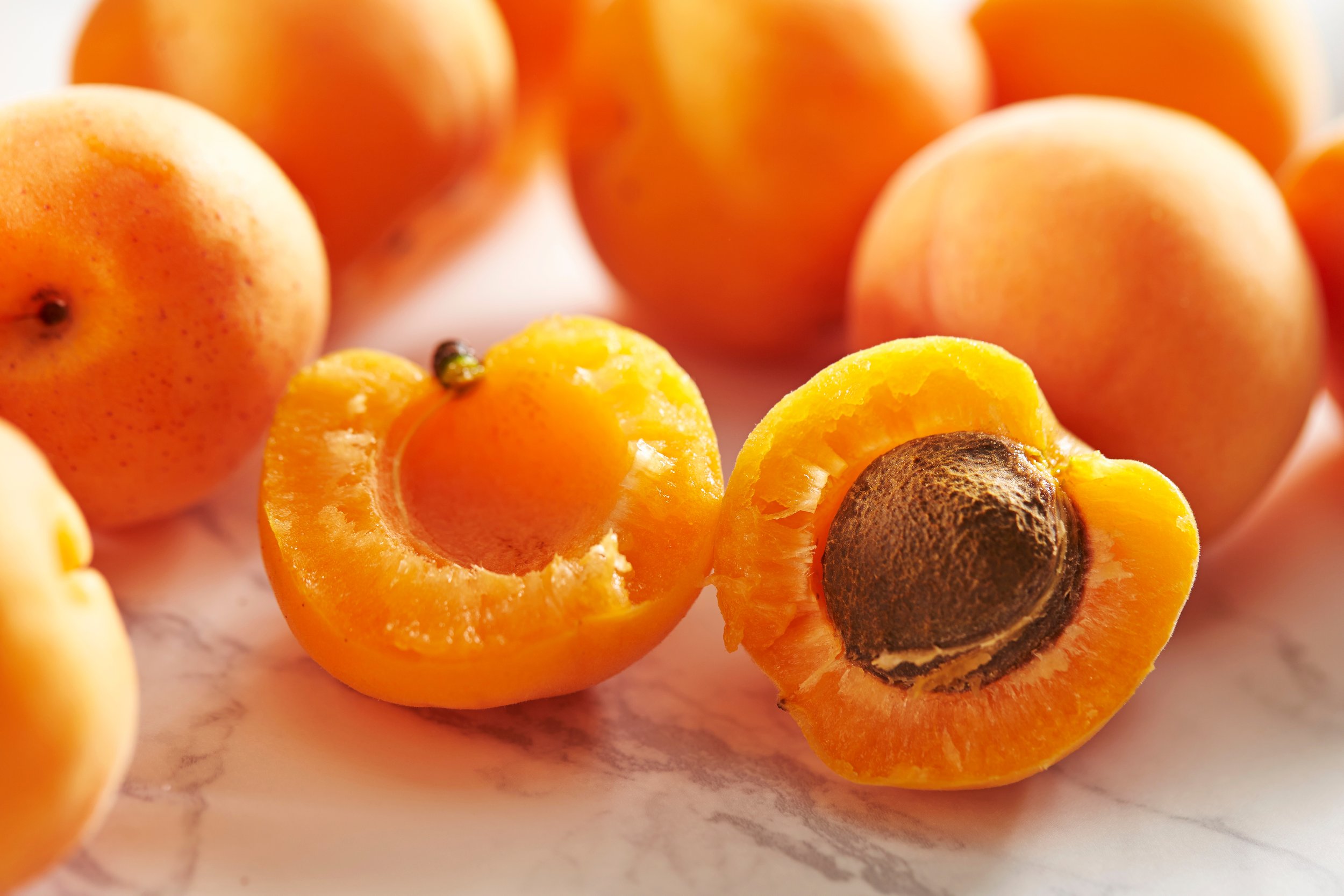
Apricot Kernel Oil
Prunus armeniaca
Therapeutics
anti-inflammatory, antimicrobial and antioxidant
Plant Anatomy & Harvest
The apricot tree is relatively small with reaching branches with bright green oval leaves. White flowers burst into bloom in late winter/ early spring, a beautiful greeting after winter's frost. These buds appear even before the leaf buds eager to be pollinated and create the fruit the tree is known for! The apricot itself is a small fleshy fruit ripening to an orange red color with a yellow/orange juicy interior and at the center a hard stone containing the kernel. This kernel has a high oil content making it valued; this oil is rich in fatty acids, antioxidants and so much more!
The apricot tree is a perennial that has undergone several domestication events, it is thought to be native to Central Asia though the modern species Prunus armeniaca thrives globally. It grows well in warm climates but is known to survive cold winters.
Harvest and clean the kernels of any remaining fruit flesh. Cold press the kernel to extract the oil within.
Color
The oil is clear and ranging from golden with orange hues to a greenish yellow depending on how ripe the kernels were at pressing.
Scent
Mild, nutty
Taste
Nutty, a bit bitter
Quality
Fast absorbing leaving a mild scent that quickly dissipates.
Constituents
The oil produced from the oil contains a high concentration of fatty acids including, oleic, linoleic, palmitic, stearic and palmitoleic acids, and tocopherol.
Uses
Apply the oil directly to the skin for immediate absorption. Additionally the oil may be consumed.
Do not consume apricot kernels themselves, they contain amygdalin which the body converts to cyanide. As well ensure that oil is sourced from a reliable supplier to make sure that it is safe for use.
References
Liu, S., Cornille, A., Decroocq, S., Tricon, D., Chague, A., Eyquard, J. P., Liu, W. S., Giraud, T., & Decroocq, V. (2019). The complex evolutionary history of apricots: Species divergence, gene flow and multiple domestication events. Molecular ecology, 28(24), 5299–5314. https://doi.org/10.1111/mec.15296
Britannica, The Editors of Encyclopaedia. "apricot". Encyclopedia Britannica, 29 Nov. 2021, https://www.britannica.com/plant/apricot
Zielińska, A., Kubasiewicz, K., Wójcicki, K., Silva, A. M., Nunes, F. M., Szalata, M., Słomski, R., Eder, P., & Souto, E. B. (2020). Two- and Three-Dimensional Spectrofluorimetric Qualitative Analysis of Selected Vegetable Oils for Biomedical Applications. Molecules (Basel, Switzerland), 25(23), 5608. https://doi.org/10.3390/molecules25235608 .
Yiğit, D., Yiğit, N., & Mavi, A. (2009). Antioxidant and antimicrobial activities of bitter and sweet apricot (Prunus armeniaca L.) kernels. Brazilian journal of medical and biological research = Revista brasileira de pesquisas medicas e biologicas, 42(4), 346–352. https://doi.org/10.1590/s0100-879x2009000400006
Stryjecka, M., Kiełtyka-Dadasiewicz, A., Michalak, M., Rachoń, L., & Głowacka, A. (2019). Chemical Composition and Antioxidant Properties of Oils from the Seeds of Five Apricot (Prunus armeniaca L.) Cultivars. Journal of oleo science, 68(8), 729–738. https://doi.org/10.5650/jos.ess19121


